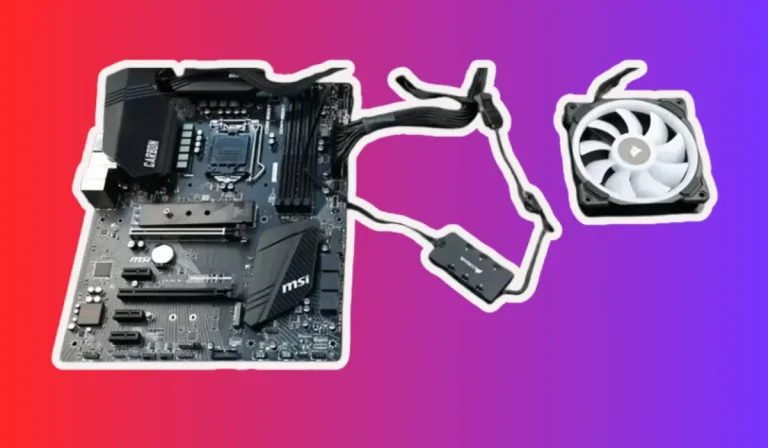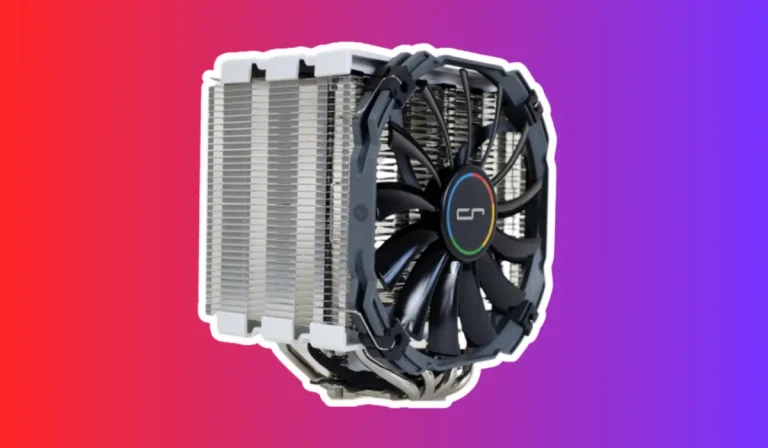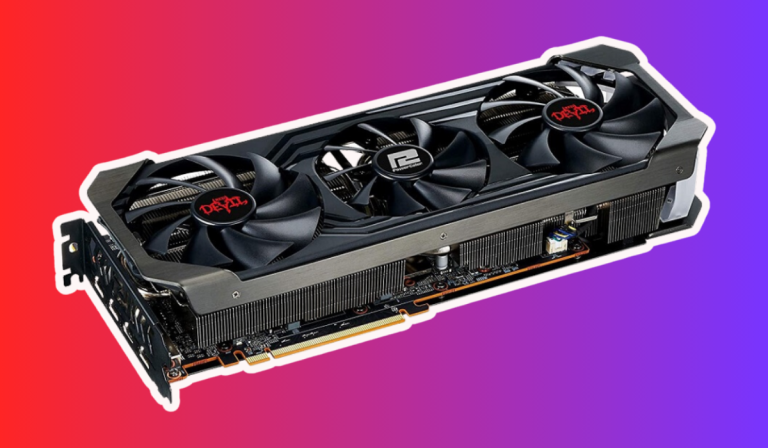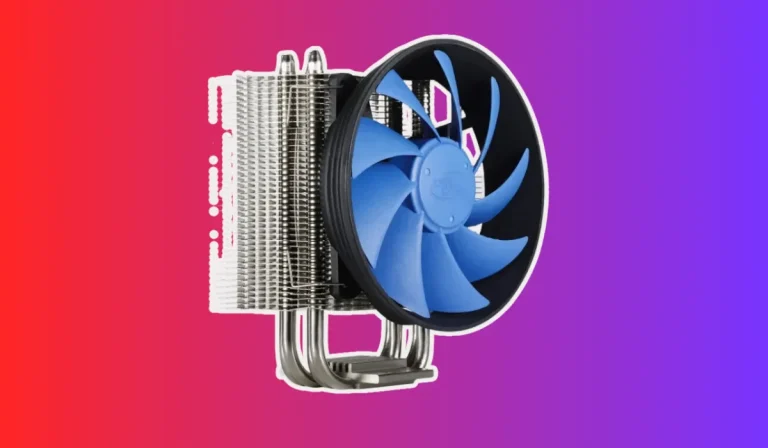Best Low-Powered GPU
Looking for a power-packed gaming experience without breaking the bank? Say hello to the best low-powered GPU! With its energy-efficient design and budget-friendly price, this little beast delivers impressive performance without compromising on your gaming needs. Get ready to level up your gaming experience while saving energy and your hard-earned money!
Best Low Powered GPU
| Serial No. | Product Name | Check Price |
| 1 | AMD Radeon RX 550 | Check Price |
| 2 | NVIDIA GeForce GTX 1650 | Check Price |
| 3 | AMD Radeon RX 560 | Check Price |
| 4 | NVIDIA GeForce GTX 1050 Ti | Check Price |
| 5 | AMD Radeon RX 570 | Check Price |
| 6 | NVIDIA GeForce GTX 1660 | Check Price |
1. AMD Radeon RX 550
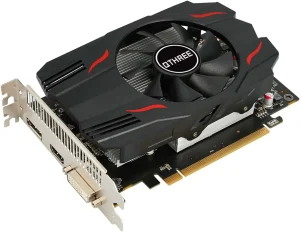
| Specification | Value |
| GPU Speed | 1180 MHz |
| Memory | 4GB GDDR5 |
| Memory Speed | Up to 6000 MHz |
| Output Ports | DP/HDMI/DVI-D |
| Resolution | 4K @ 60Hz |
| Cooling | Independent Cooling Fan |
| Power Consumption | 50W |
| Recommended Power Supply | 450W or greater |
| Stream Processors | 512 |
| DirectX | 12 |
| OpenGL | 4.6 |
AMD Radeon RX 550 is an excellent choice for gamers seeking the best low-powered GPU. As an avid gamer, I was on the hunt for the best low-powered GPU that could handle my gaming needs without putting a dent in my electricity bill. That’s when I came across the AMD Radeon RX 550. Let me share my personal experience and thoughts on this fantastic graphics card.
The AMD Radeon RX 550 boasts impressive specifications that make it a perfect fit for gamers who prioritize energy efficiency without compromising on performance.
With a GPU speed of 1180 MHz and 4GB of GDDR5 memory running at up to 6000 MHz, this graphics card delivers smooth gaming and application experiences.
One of the standout features of the Radeon RX 550 is its versatility when it comes to connectivity. Equipped with DP/HDMI/DVI-D output ports, it supports Blu-ray HD and can output 4K resolution at a smooth 60Hz.
Whether I was playing classic or modern games, this GPU handled them effortlessly at 1080p @ 60 fps, providing a high-definition visual experience.
In terms of heat dissipation, the RX 550 excels with its independent cooling fan. This feature not only keeps the GPU cool but also ensures a quiet gaming experience. Additionally, the high-quality electrical components and PCB plate contribute to the card’s overall safety and stability.
I was particularly impressed with the RX 550’s power efficiency. With a power consumption of just 50W, it doesn’t require an external power supply.
This low power consumption, combined with the all-solid-state capacitor, translates to energy savings without compromising performance.
To ensure compatibility and future-proofing, the RX 550 supports DirectX 12 and OpenGL 4.6. It utilizes a PCI Express x8 graphics slot, making it easy to install and use. The 512 stream processor chip adds to its durability and practicality, ensuring a long service life.
Pros:
- Powerful image processing capabilities
- Versatile connectivity options
- Smooth gaming at 1080p @ 60 fps
- Efficient heat dissipation for a cool and quiet gaming experience
- Low power consumption with no external power supply required
- Supports DirectX 12 and OpenGL 4.6
Cons:
- May not handle demanding AAA titles at high settings
- Limited VRAM capacity for graphics-intensive tasks
2. NVIDIA GeForce GTX 1650
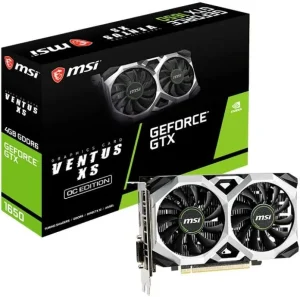
| Specification | Value |
| Chipset | NVIDIA GeForce GTX 1650 |
| Boost Clock | 1620 MHz |
| Video Memory | 4GB GDDR6 |
| Memory Speed | 12 Gbps |
| Memory Interface | 128-bit |
| Digital Max Resolution | 7680×4320 |
| Output | DL-DVI-D x 1 / DisplayPort x 1 (v1.4) / HDMI 2.0b x 1 |
NVIDIA GeForce GTX 1650 is a solid choice for gamers in search of the best low-powered GPU. As a passionate gamer who values both performance and energy efficiency, I set out to find the best low-powered GPU that could deliver exceptional gaming experiences without breaking the bank.
That’s when I stumbled upon the NVIDIA GeForce GTX 1650. Let me share my personal experience and insights on this impressive graphics card.
The GeForce GTX 1650, powered by NVIDIA, boasts specifications that make it an ideal choice for gamers seeking a balance between power and efficiency.
With a boost clock speed of 1620 MHz and 4GB of GDDR6 video memory running at a swift 12 Gbps, this GPU provides a solid foundation for smooth gaming and graphics-intensive applications.
One of the standout features of the GTX 1650 is its capability to handle high resolutions. With a digital max resolution of 7680×4320, you can enjoy stunning visuals and immerse yourself in the gaming world with crisp details. Whether you’re playing the latest AAA titles or indulging in creative tasks, this GPU will ensure an immersive visual experience.
The GTX 1650’s memory interface of 128-bit allows for fast data transfer and efficient handling of graphics-intensive tasks. This, combined with the GDDR6 video memory, ensures that you can enjoy lag-free gaming and seamless multitasking.
In terms of connectivity, the GTX 1650 offers a range of options to suit your setup. With DL-DVI-D, DisplayPort 1.4, and HDMI 2.0b outputs, you can easily connect your monitor or TV. Whether you prefer a single display or a multi-monitor setup, this GPU has you covered.
Now, let’s dive into the positive and negative aspects of the NVIDIA GeForce GTX 1650:
Pros:
- Impressive performance for a low-powered GPU
- Capable of handling high resolutions and delivering stunning visuals
- Efficient memory interface for fast data transfer
- Versatile connectivity options for various display setups
- Energy-efficient design with low power consumption
- Suitable for both gaming and graphics-intensive tasks
Cons:
- May struggle with demanding AAA titles at higher settings
- Limited video memory capacity for ultra-high-resolution gaming
3. AMD Radeon RX 560
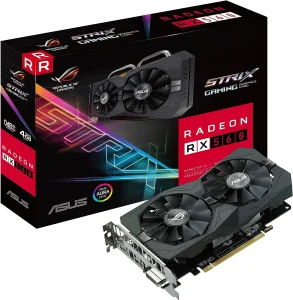
| Specification | Value |
| Boost Clock (OC Mode) | 1285 MHz |
| Video Memory | 4GB GDDR5 |
| Stream Processors | 1024 |
| RGB Lighting | ASUS Aura Sync |
| Cooling | DirectCU II with patented Wing-Blade fans |
| GPU Tweak II | Yes |
| Manufacturing Technology | Auto-Extreme with Super Alloy Power II components |
AMD Radeon RX 560 is a solid choice for gamers looking for the best low-powered GPU. As an avid gamer who values both performance and energy efficiency, finding the best low-powered GPU is always a priority.
In my search, I came across the AMD Radeon RX 560, a graphics card that promises an upgraded gaming experience without sacrificing power efficiency. Let me share my personal experience and insights on this impressive GPU.
The Radeon RX 560, powered by AMD, offers impressive specifications that make it a competitive choice for gamers seeking a balance between power and efficiency.
With a boost clock of 1285 MHz (OC Mode) and 4GB of GDDR5 video memory, this GPU provides a solid foundation for smooth gaming and graphics-intensive applications.
One of the standout features of the RX 560 is its 1024 stream processors, which help deliver excellent performance for the low power consumption it requires. This allows for smooth gameplay and efficient handling of graphics-intensive tasks.
In terms of aesthetics, the ASUS Aura Sync RGB lighting adds a touch of personalization to your gaming setup. With a nearly endless spectrum of colors and the ability to synchronize effects across an ecosystem of AURA Sync-enabled products, you can create a visually stunning environment that matches your style.
The cooling system of the RX 560 is worth mentioning as well. The DirectCU II design, coupled with patented Wing-Blade fans and 0db fan technology, delivers 30% cooler and 3X quieter performance. This ensures that your GPU stays cool even during intense gaming sessions, providing optimal performance and longevity.
Monitoring and controlling your GPU’s performance and cooling is made easy with the intuitive GPU Tweak II interface. Additionally, the Fan Connect II feature allows for GPU temperature sensing, enabling you to maintain a suitable operating temperature for your graphics card.
When it comes to manufacturing quality and reliability, the RX 560 excels with its Auto-Extreme manufacturing technology. This technology ensures premium quality by using aerospace-grade Super Alloy Power II components, providing enhanced durability and stability for long-lasting performance.
Now, let’s take a look at the positive and negative aspects of the AMD Radeon RX 560:
Pros:
- Impressive performance for a low-powered GPU
- Efficient power consumption with excellent performance per watt
- Customizable RGB lighting with ASUS Aura Sync
- Effective cooling system for optimal performance
- Intuitive GPU Tweak II interface for monitoring and control
- High-quality manufacturing with Super Alloy Power II components
Cons:
- May struggle with demanding AAA titles at higher settings
- Limited video memory capacity for ultra-high-resolution gaming
4. NVIDIA GeForce GTX 1050 Ti
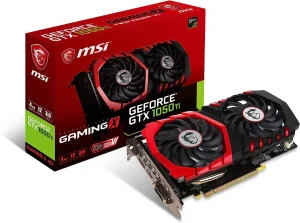
| Specification | Value |
| Clock Speed | 7008MHz |
| Interface | PCI Express x16 3.0 |
| Memory | 4GB, GDDR5 |
| Ports | 1 x DisplayPort, 1 x HDMI, 1 x DVI-D |
NVIDIA GeForce GTX 1050 Ti is a commendable choice for gamers seeking the best low-powered GPU. As a passionate gamer who values both performance and power efficiency, I am always on the lookout for the best low-powered GPU.
In my quest, I came across the NVIDIA GeForce GTX 1050 Ti, a graphics card that promises solid gaming performance without consuming excessive power. Allow me to share my personal experience and insights on this impressive GPU.
The GTX 1050 Ti, powered by NVIDIA, offers a compelling set of specifications that make it an excellent choice for gamers seeking a balance between power efficiency and performance. With a clock speed of 7008MHz and 4GB of GDDR5 memory, this GPU provides a solid foundation for smooth gaming and graphics-intensive tasks.
One of the standout features of the GTX 1050 Ti is its power-efficient design. It operates within a low-power envelope while still delivering respectable performance. This makes it a great choice for gamers who prioritize efficiency without compromising on gameplay quality.
In terms of connectivity, the GTX 1050 Ti offers multiple ports, including 1 x DisplayPort, 1 x HDMI, and 1 x DVI-D. This allows for flexible and convenient setup options, accommodating different display configurations and devices.
The GTX 1050 Ti excels in delivering smooth gameplay for popular eSports titles and most modern games at 1080p resolution. It strikes a good balance between performance and affordability, making it an ideal choice for budget-conscious gamers.
Now, let’s take a closer look at the positive and negative aspects of the NVIDIA GeForce GTX 1050 Ti:
Pros:
- Excellent power efficiency for a low-powered GPU
- Solid gaming performance at 1080p resolution
- Affordable price point compared to higher-end GPUs
- Compact form factor suitable for small PC builds
- Multiple port options for flexible connectivity
Cons:
- May struggle with demanding AAA titles at higher settings
- Limited memory capacity for ultra-high-resolution gaming
5. AMD Radeon RX 570
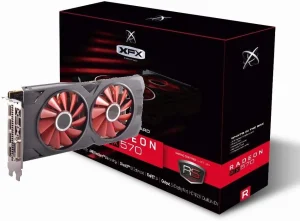
| Specification | Value |
| Chipset | AMD RX 570 |
| Memory | 8GB GDDR5 |
| Stream Processors | 2048 |
| Dual Bios | Gaming and Cryptocurrency Mining |
| Cooling Design | XFX Double Dissipation |
| Minimum Power Supply | 500 Watt |
AMD Radeon RX 570 is a commendable choice for gamers seeking the best low-powered GPU. When it comes to finding the best low-powered GPU that combines performance and power efficiency, the AMD Radeon RX 570 deserves a closer look.
As an avid gamer who values both smooth gameplay and energy efficiency, I had the opportunity to test and experience this graphics card firsthand. Let me share my insights and opinions on this impressive GPU.
The RX 570, powered by AMD, boasts a set of specifications that make it a compelling choice for gamers seeking a balance between power efficiency and performance.
With 8GB of GDDR5 memory and 2048 stream processors, this GPU provides a solid foundation for immersive gaming and demanding graphics tasks.
One of the standout features of the RX 570 is its dual BIOS option. This unique functionality allows users to switch between a gaming mode and a cryptocurrency mining mode, catering to different needs and maximizing the GPU’s potential. Whether you’re a gamer or a crypto enthusiast, this flexibility is a welcome addition.
In terms of cooling, the XFX Double Dissipation design ensures effective heat dissipation, keeping the GPU running at optimal temperatures even during intense gaming sessions. This cooling solution not only enhances performance but also prolongs the lifespan of the graphics card.
The RX 570 is known for its power efficiency. It strikes a good balance between performance and energy consumption, making it an ideal choice for gamers who want to minimize their carbon footprint without sacrificing gaming quality. With a minimum power supply requirement of 500 watts, it can be easily integrated into various PC setups.
Now, let’s take a closer look at the positive and negative aspects of the AMD Radeon RX 570:
Pros:
- Solid gaming performance with 8GB of GDDR5 memory
- Dual BIOS option for gaming and cryptocurrency mining
- Effective cooling design for optimal temperature management
- Power-efficient GPU, minimizing energy consumption
- Versatile compatibility with a minimum power supply requirement of 500 watts
Cons:
- May struggle with demanding AAA titles at higher settings
- Limited overclocking potential compared to higher-end GPUs
6. NVIDIA GeForce GTX 1660
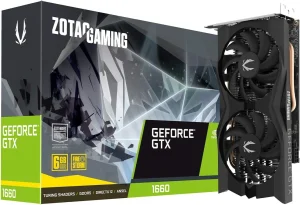
| Specification | Value |
| Architecture | Turing |
| Performance | 1080p, 60 fps |
| Supported OS | Windows 10 / 8 / 7 |
| Card Size | 8.5-inch, super compact |
| Slot Type | Dual slot |
| Compatibility | 4K / HDR / VR ready |
| Display Ports | 3 x DisplayPort 1.4, 1 x HDMI 2.0b |
| Boost Clock | 1785 MHz |
NVIDIA GeForce GTX 1660 is a worthy choice for gamers seeking the best low-powered GPU. As an avid gamer, I am always on the lookout for the best low-powered GPU that can deliver excellent performance without compromising power efficiency.
In my pursuit, I stumbled upon the NVIDIA GeForce GTX 1660, a graphics card that promises to bring both classic and modern games to life at 1080p resolution and 60 frames per second. Allow me to share my personal experience and insights on this impressive GPU.
The GeForce GTX 1660, built on NVIDIA’s Turing architecture, offers a compelling set of specifications that make it a strong contender for gamers seeking a balance between power efficiency and gaming performance.
With its ability to handle classic and modern games at 1080p resolution and 60 fps, this GPU provides an immersive gaming experience without breaking the bank.
One of the standout features of the GTX 1660 is its compact form factor. With a size of just 8.5 inches, it can fit into 99% of systems, making it an ideal choice for gamers with space constraints or those who prefer smaller PC builds. The dual-slot design ensures efficient cooling while maintaining a compact footprint.
The GTX 1660 is also equipped with the necessary features to support 4K, HDR, and VR experiences. Whether you’re playing the latest AAA titles or immersing yourself in virtual reality, this GPU is ready to handle the demands of modern gaming and visual technologies.
In terms of connectivity, the GTX 1660 offers three DisplayPort 1.4 ports and one HDMI 2.0b port, providing flexibility for multiple monitor setups and compatibility with various display devices.
Now, let’s take a closer look at the positive and negative aspects of the NVIDIA GeForce GTX 1660:
Pros:
- Excellent performance for classic and modern games at 1080p, 60 fps
- Power-efficient GPU, balancing performance and energy consumption
- Compact form factor, fitting into 99% of systems
- Support for 4K, HDR, and VR experiences
- Multiple display ports for flexible connectivity
Cons:
- May struggle with demanding AAA titles at higher resolutions
- Limited overclocking potential compared to higher-end GPUs
Buying Guide: Best Low-Powered GPU
Choosing the right low-powered GPU for your gaming needs can be a daunting task, considering the wide range of options available in the market. As an expert, I’m here to guide you through the process and help you make an informed decision.
Below, you’ll find six essential factors to consider when choosing the best low-powered GPU for your specific requirements. By carefully evaluating these factors, you’ll be able to find a GPU that not only delivers excellent performance but also maximizes power efficiency.
1. Power Efficiency: When it comes to low-powered GPUs, power efficiency is key. Look for a GPU that strikes a balance between performance and energy consumption.
GPUs built on newer architectures, such as NVIDIA’s Turing or AMD’s RDNA, often offer better power efficiency compared to older models. Check the GPU’s power consumption specifications and look for reviews or benchmarks that highlight its efficiency under different workloads.
2. Performance: While low-powered GPUs are designed to be energy-efficient, it’s important to consider their performance capabilities. Determine the level of performance you require based on the games or applications you intend to use.
Look for GPUs that can handle your desired resolution and frame rate. Consider factors such as the number of stream processors, memory capacity, and clock speeds to gauge a GPU’s performance potential.
3. Compatibility: Ensure that the GPU you choose is compatible with your existing system. Check the GPU’s physical dimensions and make sure it fits within your PC case.
Consider the power supply requirements and ensure that your system meets or exceeds the recommended specifications. Additionally, check the GPU’s compatibility with your operating system and any specific features you may require, such as VR support or multiple display connectivity.
4. Cooling Solution: Efficient cooling is essential for maintaining optimal performance and longevity of your GPU. Look for GPUs that feature effective cooling solutions, such as dual or triple fan designs, heat pipes, or advanced cooling technologies. This will help keep the GPU’s temperature in check, preventing thermal throttling and ensuring a stable gaming experience.
5. Budget: Consider your budget when choosing a low-powered GPU. Determine how much you are willing to spend and find a GPU that offers the best value for your money.
While high-end GPUs may offer top-tier performance, they often come with a higher price tag. Evaluate your needs and find a GPU that provides the right balance between performance and cost, keeping in mind your budget constraints.
6. Reviews and Recommendations: Before making a final decision, read reviews and seek recommendations from trusted sources. Look for reviews that specifically focus on low-powered GPUs and their performance in real-world scenarios.
This will provide valuable insights into the GPU’s strengths, weaknesses, and compatibility with different systems. Additionally, consider seeking recommendations from online communities or forums where experienced users can share their firsthand experiences and provide valuable advice.
Recommended Low-Powered GPUs: Based on the factors discussed above, I would recommend considering the following GPUs from the list provided earlier:
1. AMD Radeon RX 570: This GPU offers a solid balance between power efficiency and performance. With its versatile dual BIOS option, effective cooling design, and 8GB of GDDR5 memory, it provides a smooth gaming experience while minimizing energy consumption.
2. NVIDIA GeForce GTX 1660: The GTX 1660 excels in delivering excellent performance for classic and modern games at 1080p resolution and 60 fps. Its power efficiency, compact form factor, and support for 4K, HDR, and VR experiences make it a compelling choice for low-powered gaming setups.
FAQ’s
1. Can a low-powered GPU deliver satisfactory gaming performance?
Yes, low-powered GPUs can provide satisfactory gaming performance, especially for gaming at 1080p resolution. While they may not deliver the same level of performance as high-end GPUs, they are designed to strike a balance between power efficiency and gaming capabilities.
2. Will a low-powered GPU be compatible with my existing power supply?
Most low-powered GPUs have modest power requirements and are compatible with standard power supplies found in most desktop PCs. However, it’s always advisable to check the power supply specifications and ensure that it meets or exceeds the GPU’s power requirements.
3. Are low-powered GPUs capable of running the latest AAA titles?
Low-powered GPUs can run many of the latest AAA titles, but their performance may vary depending on the specific game and its system requirements.
4. Do low-powered GPUs support multiple displays?
Yes, many low-powered GPUs offer support for multiple displays. They typically come with multiple display ports, such as HDMI or DisplayPort, allowing you to connect multiple monitors or other display devices.
5. Can a low-powered GPU handle virtual reality (VR) gaming?
Some low-powered GPUs are capable of handling VR gaming, but it’s important to check the specific GPU’s VR compatibility. Look for GPUs with VR-ready certifications or those that meet the recommended specifications for the VR headset you intend to use.
Conclusion
Finding the best low-powered GPU requires careful consideration of various factors, such as power efficiency, performance, compatibility, cooling, and budget. By evaluating these aspects, you can choose a GPU that not only meets your gaming needs but also ensures optimal power consumption.
Remember to read reviews, seek recommendations, and explore the specifications of different GPUs before making a final decision. Whether you’re a casual gamer or someone looking to build a power-efficient gaming rig, there are plenty of low-powered GPUs available that can deliver satisfactory performance without breaking the bank. Happy gaming!

